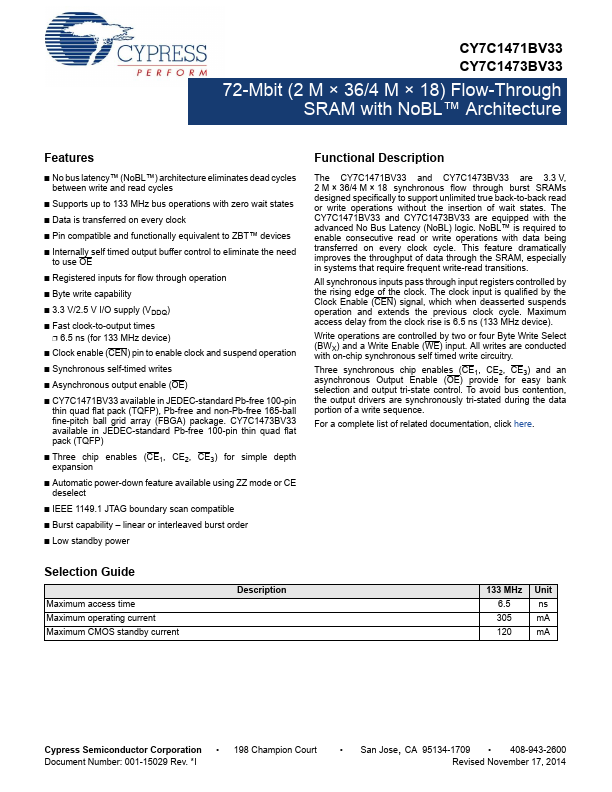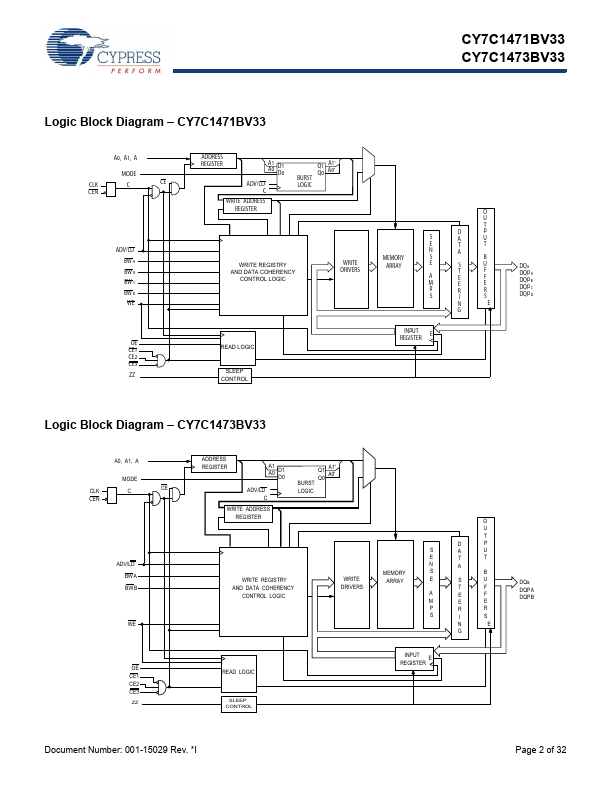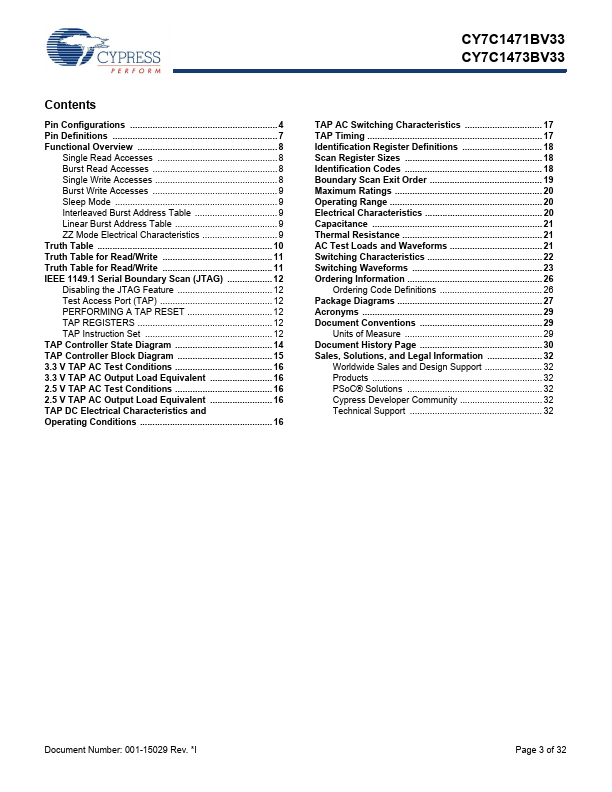CY7C1473V25
(CY7C147xV25) 72-Mbit (2M x 36/4M x 18/1M x 72) Flow-Through SRAM (Cypress Semiconductor)
CY7C1473V33
(CY7C147xV33) 72-Mbit (2M x 36/4M x 18/1M x 72) Flow-Through SRAM (Cypress Semiconductor)
CY7C147
4K x 1 STATIC RAM (Cypress Semiconductor)
CY7C1470BV25
(CY7C147xBV25) 72-Mbit (2M x 36/4M x 18/1M x 72) Pipelined SRAM (Cypress Semiconductor)
CY7C1470BV33
72-Mbit (2 M x 36/4 M x 18/1 M x 72) Pipelined SRAM (Cypress Semiconductor)
CY7C1470V25
72-Mbit(2M x 36/4M x 18/1M x 72) Pipelined SRAM (Cypress Semiconductor)
CY7C1470V33
(CY7C147xV33) 72-Mbit (2M x 36/4M x 18/1M x 72) Pipelined SRAM (Cypress Semiconductor)
CY7C1471BV25
72-Mbit (2 M x 36) Flow-Through SRAM (Cypress Semiconductor)




